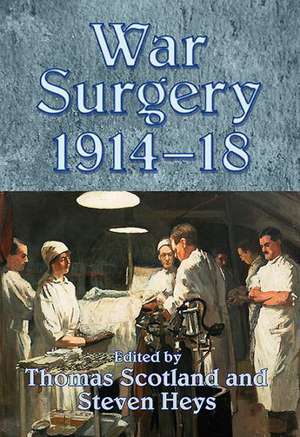War Surgery 1914-18
Autor Steven Heys, Thomas Scotlanden Limba Engleză Paperback – 15 ian 2014
Preț: 200.01 lei
Nou
Puncte Express: 300
Preț estimativ în valută:
38.28€ • 41.56$ • 32.15£
38.28€ • 41.56$ • 32.15£
Carte disponibilă
Livrare economică 02-16 aprilie
Livrare express 18-22 martie pentru 27.92 lei
Preluare comenzi: 021 569.72.76
Specificații
ISBN-13: 9781909384408
ISBN-10: 1909384402
Pagini: 287
Ilustrații: illustrations
Dimensiuni: 155 x 231 x 23 mm
Greutate: 0.41 kg
Editura: HELION & COMPANY
ISBN-10: 1909384402
Pagini: 287
Ilustrații: illustrations
Dimensiuni: 155 x 231 x 23 mm
Greutate: 0.41 kg
Editura: HELION & COMPANY




